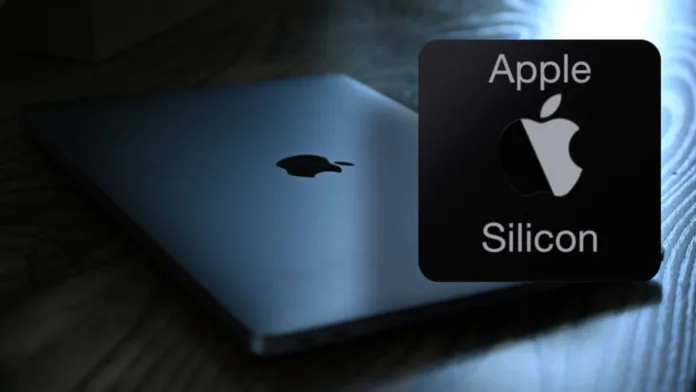With the release of MLX, Apple has demonstrated its recent advancements in artificial intelligence (AI) and the potential of Apple Silicon, to put it at the forefront of innovation in the rapidly evolving field of technology. This machine learning framework is painstakingly designed to function effectively and adaptably on Apple Silicon, creating new opportunities in the field of artificial intelligence. This article explores the nuances of MLX, looking at its uses, capabilities, and the larger picture of Apple’s AI initiative.
Table of Contents
Comprehending MLX Machine Learning Framework: A Giants-Inspired Framework
MLX is a machine learning framework that stands out in the field, taking cues from industry heavyweights like PyTorch, Jax, and ArrayFire. MLX stands out due to its innovative unifying memory model, which deviates from traditional frameworks.
A ground-breaking idea is presented by the Unified Memory Model MLX: arrays stored in shared memory. Thanks to this innovation, operations on MLX arrays can now smoothly span any kind of supported device—CPU or GPU—eliminating the need for laborious data copies.

MLX Effectiveness For Apple Silicon
Awni Hannun, a key member of Apple’s machine learning team, is excited about MLX and highlights its effectiveness for Apple Silicon, the company that powers laptops and other devices.
Similar to NumPy Array Framework
Beyond efficiency, MLX introduces an array framework akin to NumPy that is optimized for best results in machine learning tasks on Apple Silicon. Moreover, MLX provides a Python API that is quite similar to NumPy, and a robust C++ API that is in line with the Python counterpart.
Also Read: Apple Generative AI: Tim Cook’s Vision for Responsible Innovation
AI as a Fundamental Technology: Apple’s Vision
Tim Cook, the CEO of Apple, has made significant investments in AI while maintaining a responsible approach to continuous product improvements. These remarks demonstrate the company’s commitment to AI. Cook emphasizes that machine learning and artificial intelligence are fundamental technologies that underpin almost all Apple products.
The Function of AI in Feature Creation
Cook uses a variety of examples to highlight the impact of AI, from life-saving features like fall detection and the Apple Watch’s ECG to iOS 17’s Personal Voice and Live Voicemail. These innovations are made possible by AI integration.
Apple’s AI Development: A Strategic Turn
Apple is actively pushing its position in AI, despite its conservative image. Cook’s recent low-key approach changes with its mention of ongoing work in generative AI and other models.

Model Libraries and Frameworks
Unexpectedly, the machine learning research team at Apple released MLX and MLX Data, which are available through GitHub and PyPI, two open-source repositories. These products support seasoned developers as well as give them the ability to train complex AI models.
MLX Data: A Powerhouse Independent of Frameworks
MLX Data is described by Awni Hannun as a “framework-agnostic, efficient, and flexible package for data loading.” It increases the adaptability of Apple’s AI toolkit by being compatible with the PyTorch, MLX, and Jax frameworks.
Apple’s Advancement Towards Generative AI
Apple takes a more measured approach, in contrast to rivals like Microsoft and Google, who are pursuing generative AI applications. September’s emphasis on foundational models and services suggests a tactical change towards more extensive AI integration.
Conclusion
Apple’s foray into AI, exemplified by MLX, represents an important turning point. A bright future is painted by the company’s dedication to responsible AI development and strategic shift towards generative AI. Expect ground-breaking improvements in product features and capabilities as Apple keeps investing in AI.
FAQs
Q.1. Does MLX support Apple Silicon exclusively?
A. 1. No, MLX is optimized for Apple Silicon, but it runs well on a range of supported hardware, such as CPUs and GPUs.
Q. 2. What is the role of MLX in generative AI?
A. 2. Though MLX concentrates on machine learning, Apple’s recent strategic change suggests that work on generative AI applications is still ongoing.
Q. 3. What sets MLX apart from PyTorch and Jax, among other frameworks?
A. 3. MLX is unique in that it has a unified memory model that enables operations on shared memory arrays across various devices.
Q. 4. For seasoned developers only, are MLX and MLX Data appropriate?
A. 4. With their user-friendly designs, MLX and MLX Data are suitable for developers with different levels of experience.
Q. 5. How does Apple make sure that AI is developed responsibly?
A. 5. Tim Cook, CEO of Apple, places a strong emphasis on ethical AI development that ensures long-term product improvements.
Disclaimer:
AI was used to conduct research and help write parts of the article. We primarily use the Gemini model developed by Google AI. While AI-assisted in creating this content, it was reviewed and edited by a human editor to ensure accuracy, clarity, and adherence to Google's webmaster guidelines.


